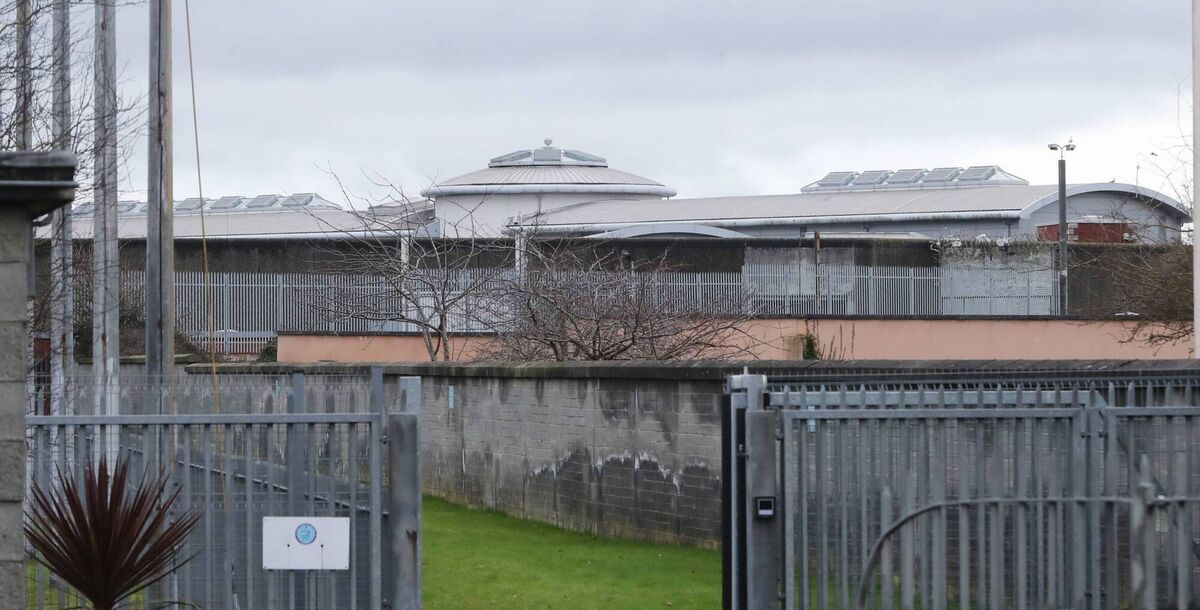Adding extra prison spaces not the answer to dehumanising, degrading overcrowding

The 'newly built' Cork Prison. The minister for justice appears to believe that by providing extra prison spaces, the overcrowding crisis will be solved. History clearly shows that such an approach, on its own, is doomed to fail. File picture: Larry Cummins
Each year the publication of the Annual Prisons’ Report generates the same headlines, all focused on overcrowding. The 2024 report is no exception.
The Director General now claims that overcrowding is at an all-time high. This needs context. Chronic overcrowding has been a feature of the Irish prison system for over 50 years.
For example, during the 1990s and early 2000s, Mountjoy Prison held close to 800 men in a facility built for fewer than 400. I recall more than 80 prisoners squeezed into the B basement, originally designed to accommodate 26 prisoners.
A regular occurrence in those days was that prisoners slept on mattresses on the floors of offices, storage rooms and even on pool tables, which served as temporary beds. I want to put the record straight, prison overcrowding is not a recent phenomenon, it has long plagued the Irish Prison Service.
The Commission of Inquiry into the Irish Penal System, chaired by the late Dr Ken Whitaker was established in 1983 following an industrial dispute at Mountjoy Prison. Its report, published in August 1985, 40 years ago last month, highlighted prisoner numbers as a key concern.
At that time, the total prison population was just over 1,900. The commission warned that without close monitoring and control, prisoner numbers would inevitably spiral. With hindsight, that warning was entirely accurate.
The report recommended that capping prisoner numbers should be seriously considered and developing alternatives to custody prioritised, stressing that imprisonment should be a last resort and only used for serious and violent offenders.
Those recommendations were ignored by the Department of Justice. In the subsequent years, the ‘prison estate’ (the term used for prison property and buildings) has expanded far beyond what was envisaged and thousands of additional cells have been built, staff numbers have increased proportionately, and costs have soared.
The latest report shows that keeping a prisoner now costs almost €100,00 annually, with the Prison Service budget reaching €525 million this year. If prisoner numbers continue to rise, the system will become an unsustainable burden on the Exchequer, and there are many better ways to spend the taxpayers’ money.
The Department of Justice and the Irish Prison service have consistently failed to solve overcrowding, and it is now time to develop a new and innovative strategy. A first step would be legislation to cap prisoner numbers and to stop jailing short-term offenders.
Last year, 5,091 sentenced prisoners entered custody. Astonishingly, 77% received sentences of 12 months or less, meaning over 3,900 prisoners went to prison for no longer than 12 months.
When statutory remission is applied, sentences are reduced by one quarter, and all prisoners in this category serve a maximum of nine months. What benefits does this policy bring? In my view, very few, if any.
What I am certain of is that this group is the single biggest contributor to the ongoing overcrowding crisis. Abandoning the current dysfunctional policy of imprisoning almost 4,000 short-term prisoners annually would be a significant step in immediately controlling and eventually ending prison overcrowding.
To succeed, such a revolutionary reform must be backed by serious investment in community-related sanctions and activities. A properly resourced Probation Service could oversee the delivery of community-based education programmes, drug treatment, work training and other activities nationwide.

I know from practical experience that such schemes have unlimited potential. For many years, two Mountjoy work parties contributed to communities, one built over 20 community centres and amenities in deprived areas, involving over 2,000 prisoners, fewer than 3% ever re-offended.
The other work party created and maintained gardens at hospitals, nursing homes and in community-based facilities, equipping participants with new skills while enhancing community facilities. Those types of initiatives work and could be replicated in outside communities.
Another negative consequence of overcrowding is the Irish Prison Service’s long-established policy of adding extra cellular accommodation within existing prisons. Back in 1985, I described Mountjoy Prison as a "concrete jungle".
The whole prison environment was totally dominated by huge stone-faced buildings, devoid of open spaces and little natural light. It was dark, depressing and claustrophobic.
Sadly, over the years that building policy has succeed in creating three additional "concrete jungles" at Wheatfield/Cloverhill, Portlaoise/Midlands and Limerick, where almost every square metre of open space has been built on.
Wheatfield and the Midlands originally included thoughtful designs, with open areas and spaces between buildings to allow light and prevent claustrophobia.
It is deeply disappointing that such well-designed prisons have been compromised by what only be described as an ad hoc building policy. And to make matters worse, all four "concrete jungles" will be around for the next hundred years or more.
I wish to highlight that the present situation is far worse that official figures suggest. The Prison Service uses bed capacity rather than cell capacity to measure overcrowding.
This is misleading, as nowadays many single cells have two and sometimes three permanent beds yet only numbers beyond that are counted as overcrowding. If cell capacity were used as the measure, as it should be, today’s overcrowding would be close to 60% above capacity.
Overcrowding is now chronic with nothing but negative consequences for every aspect of prison life. Most prisoners must share cellular accommodation, known as doubling-up, but doubling-up is an understatement, in many cases three, four and even five prisoners share a cell.
Such a practice is undesirable for many reasons. Prisoners have no privacy, no personal space, and are forced to use the toilet in the presence of others. It also creates opportunities for bullying, physical and sexual abuse and drug use, with some prisoners being pressured to smuggle drugs inside.
All in all, a horrible situation, and prisoners spend more than 18 hours a day in these conditions. I can’t imagine how awful it must have been during the recent very warm and humid weather. Little wonder then that some prisoners "crack up".
Overcrowding also has serious negative consequences for staff and management. There are health and safety issues along with security and operational challenges.
It is very difficult for prison staff to get to know individual prisoners and to build a good working relationship with them. In addition, overcrowding almost automatically creates high levels of tension, stress and anxiety, not an ideal working environment.
And prison management at local and headquarters level is just chasing its tail day in day out. Almost every single minute of every working day revolves around responding to overcrowding.
It is nothing other than a soul-destroying experience, every morning starts off the same, every evening finishes the same, and everything is dominated by overcrowding, it is never-ending.

The policies and approaches applied to overcrowding over the past 40 years or so have failed to solve the problem. It is well past the time for a new approach, new thinking, and thinking outside the box, for a change.
The minister for justice, when welcoming the publication of the 2024 report last week, commended the staff for their hard work and rightly so, but much more needs to be done.
He, too, appears to believe that by providing extra prison spaces, the overcrowding crisis will be solved. History clearly shows that such an approach, on its own, is doomed to fail.
The minister needs to take the bull by the horns and introduce legislation to cap prisoner numbers and divert all short-term prisoners away from the prison system.













